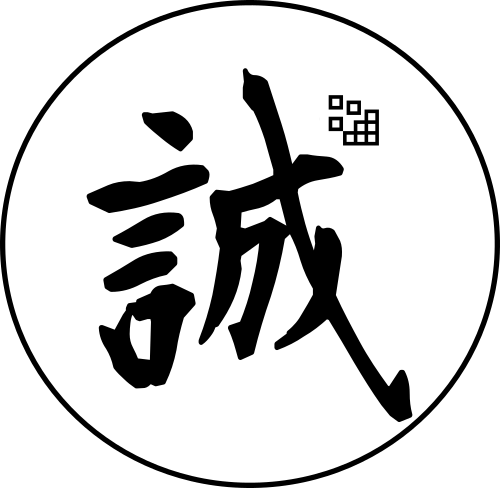This time, the story revolves around a prominent figure representing Kumamoto named Kowashi Inoue.
Kowashi Inoue, as a figure, is rarely mentioned in the Japanese history curriculum taught in compulsory education.
Even in Kumamoto, Kowashi Inoue is not as well-known as someone like Shōnan Yokoi. He is truly a “forgotten” figure in history.
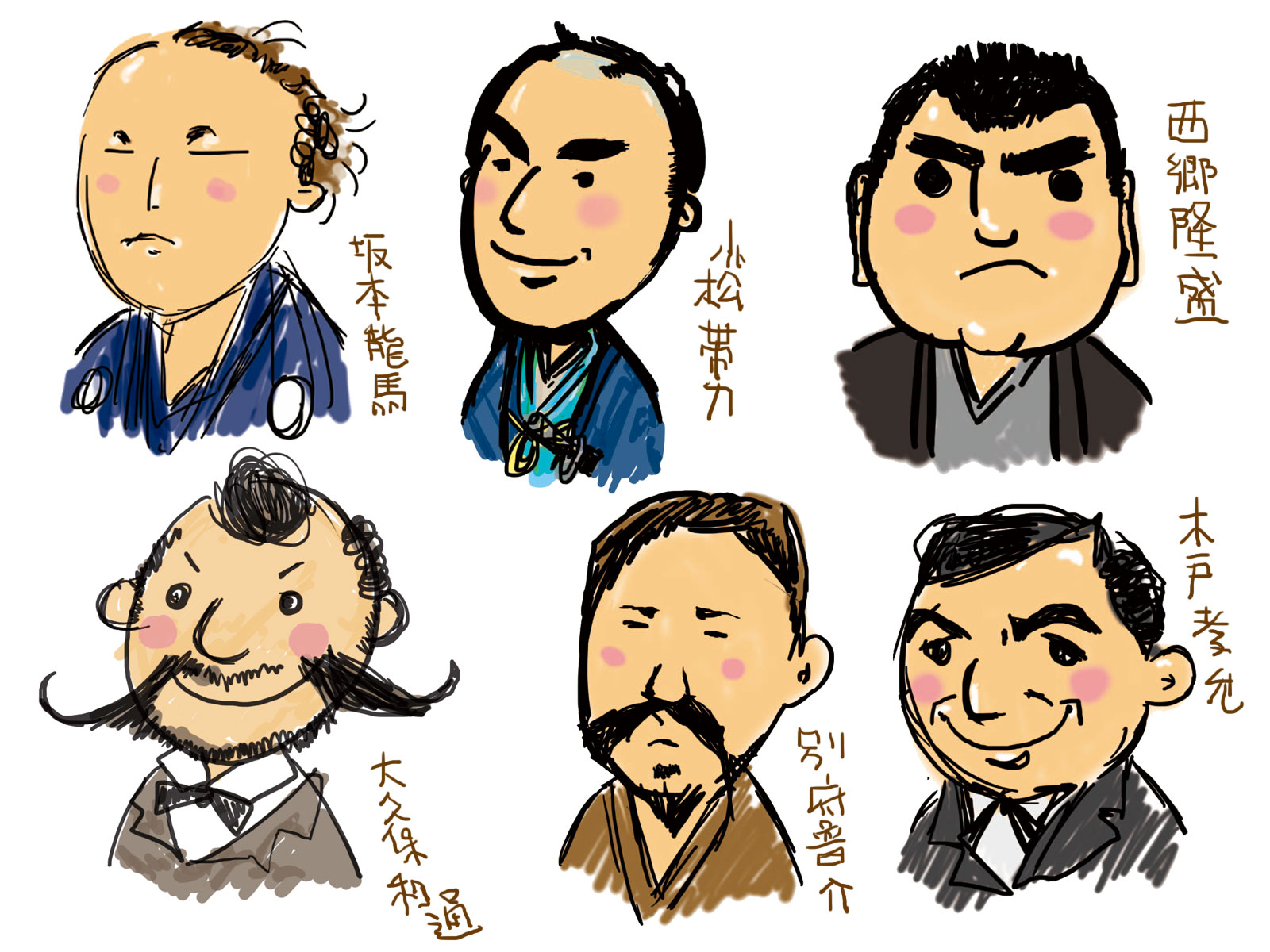
Why ?
The reason for that is nothing other than Japan’s defeat in the previous war.
Let’s take a closer look at the reasons behind that, then.
- The Truth of the Imperial Rescript on Education
- Why was the “Imperial Rescript on Education” demanded?
- A person named Kowashi Inoue
- What is the “Imperial Rescript on Education”?
- Summary
The Truth of the Imperial Rescript on Education
This article is a compilation based on the book “The Truth of the Imperial Rescript on Education” by Tetsuo Ito, with the aim of presenting the information as clearly as possible.

The national character of the Japanese that impressed the world
On March 11, 2011, an unprecedented earthquake and tsunami struck the Pacific coast of Eastern Japan. (Omitted)
The morning after the disaster, when I visited Shinjuku Station, people who couldn’t return home were sitting on the stairs, waiting for the trains to start running. However, I’m not sure who initiated it, but even in the midst of the crowded station where there was no place to sit, the central aisle was kept clear because “people need to pass through.”
During the scheduled power outages, train services were reduced, causing overcrowding at every station. However, there was no chaos whatsoever. People followed the instructions of station staff without complaining, formed orderly queues, and quietly waited for the trains to arrive.
A German person who witnessed this reportedly exclaimed, “Are the Japanese people an army?” The Japanese people demonstrated a level of discipline that is often associated with the military.
CNN, the American news channel, reported on this situation, stating that “residents remain calm, maintaining self-help efforts and harmony with others while observing courtesy.” They compared it to the case of New Orleans after Hurricane Katrina, emphasizing that “such looting behavior is virtually non-existent,” as reported from Sendai.
But that’s not all. In China, where initially there was insufficient food in the evacuation centers, news footage showed that the victims protected the order, formed lines, and distributed the limited food equally, with everyone expressing gratitude. As a result, voices unintentionally arose, saying, “We Chinese still have a long way to go compared to the Japanese in terms of morality and ethics. We must learn from the Japanese people affected by the disaster.”
source:The Truth of the Imperial Rescript on Education

The “Imperial Rescript on Education,” which is said to have become the DNA of the Japanese people’s hearts.
After the end of the Greater East Asia War, I often found myself feeling a sense of despair, thinking that the Japanese people had lost the moral support they relied on.
However, the recent major disaster has made me realize that the moral values and ethical principles that I had once considered to be corrupted are still very much alive in the hearts of the Japanese people. It may be due in part to the innate qualities nurtured within Japan’s beautiful nature and environment. However, I believe that a significant portion can be attributed to education.
It was the pre-war “shūshin” (moral education) that cultivated these values, and at the core of “shūshin” was the “Imperial Rescript on Education.” It was through this kind of moral education that feelings of consideration, politeness, and adherence to order were fostered.
source:The Truth of the Imperial Rescript on Education
When discussing kowashi Inoue, the “Imperial Rescript on Education” cannot be ignored.
On the website of the Ministry of Education, Culture, Sports, Science, and Technology, the following is written about the Imperial Rescript on Education:
The drafting of the Imperial Rescript on Education was carried out under the responsibility of Prime Minister Aritomo Yamagata and Minister of Education Yoshikawa Bunshou. Initially, the plan was to compile maxims related to moral education, but eventually, it took the form of an imperial rescript. Regarding the drafting process, it seems that the initial draft was entrusted to Masanao Nakamura. However, later on, the central focus became a draft prepared by Kowashi Inoue, who was the Chief of the Legislative Bureau at the time, with assistance from former Nagazane Motoda, who was serving as a Privy Councilor at the time. The final text was the result of several revisions and modifications.
source:mext.go.jp/b_menu/hakusho/html/others/detail/1317610.htm
Why was the “Imperial Rescript on Education” demanded?
During the era of modernization
The Meiji Restoration is considered a groundbreaking and transformative period in which Japan underwent significant changes that it could be proud of on a global scale.
On the other hand, it is important to acknowledge that while Japan was undergoing modernization during the Meiji period, there were also efforts to rectify the one-sided approach of Westernization and create a new Japan.
The Spiritual, Cultural, and Moral State of Confused Meiji Japan
At that time, numerous Western study missions and exchange students were dispatched to various Western countries. They were overwhelmed by the power of Western civilization, and some began openly expressing distrust towards Japan’s traditional national character.
There were indeed individuals who made claims such as “Japan’s backwardness lies in its Japanese language, which is not internationally applicable. We should abandon the Japanese language.”
Thus, the number of young people who were captivated by the West continued to increase, and by around the 10th year of the Meiji era, they had become a significant presence that could not be ignored. There was a wave of individuals who disregarded the existence of the imperial family, the Japanese language, and even the spiritual and cultural values of Japan, to the extent that it threatened the stability of the nation’s system.
The state of the educational sector at that time
In the 18th year of the Meiji era, Mori Arinori, who was a leading advocate of Westernization, assumed the position of Minister of Education. He actively promoted Western-style education.
Regarding the state of the educational sector at that time, bureaucrat Shōichirō Ishii wrote about an episode during his school inspections, stating that “there was a strange atmosphere prevailing.”
There was a prevailing trend of idealizing American and European figures, with a disregard for Japan and its values becoming evident.
In other words, there was an atmosphere where Westerners were highly regarded, Japanese people were seen as inferior, and there was a belief that Japan had to abandon its historical customs and fully Westernize in order to be successful.

In such a context, a scholar named Masanao Nakamura was tasked with creating a draft of the Imperial Rescript on Education.
To ensure there were no legal issues, checks were conducted by Kowashi Inoue, who was the Director-General of the Legislative Bureau at the time.
A person named Kowashi Inoue
Background and Ideology
Takeshi Inoue was born as the third son in a lower-ranking samurai family in Kumamoto Domain.
From a young age, Kowashi Inoue was hailed as a child prodigy, and it is said that he memorized all the “Hyakunin Isshu” poems that his parents read to him by the age of four.
Eventually, Kowashi Inoue started studying at a private school called Hitsu-Yudo. The location of this Hitsu-Yudo is now within the premises of Kumamoto City’s municipal Hitsuyukan High School, where a splendid monument stands in remembrance of Inoue.

Afterward, Inoue entered the school of the domain’s Confucian scholar, Kinosita Saitan, where he thoroughly studied Zhu Xi’s teachings. It is worth noting that the Zhu Xi philosophy in Kumamoto had a unique aspect as it incorporated elements of Yangmingism, making it quite distinct from the conventional Zhu Xi school.
Here, Inoue excelled once again and was selected as a resident student at the domain school called “Jishukan,” based on the recommendation of his mentor, Kikuchi Saitan. He delved deeper into the unique study of Neo-Confucianism practiced at the Jishukan.
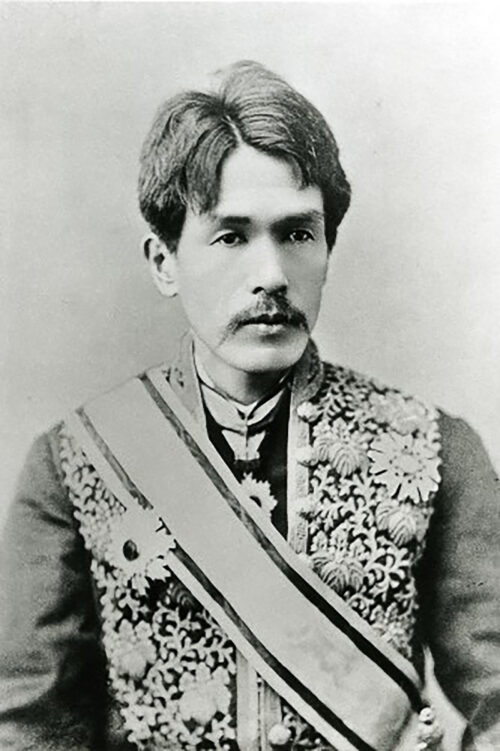
Criticism of the influential figure Shōnan Yokoi’s argument for opening the country
In a dialogue between Kowashi Inoue and the esteemed scholar Shōnan Yokoi, which took place when Inoue was twenty years old, we can catch a glimpse of his unique ideology.
At that time, Shōnan Yokoi was 56 years old. He was a prominent Confucian scholar and a representative figure of the progressive school of thought in Japan. In modern terms, he could be described as an internationalist, a proponent of globalization, and a staunch advocate of thoroughgoing open-door policies.
First is “Thought” and “Learning.

In ancient times, there were no written books as we have today. So what did “learning” refer to back then?

Basically, it emphasized the importance of “thinking” and argued that it was not enough to simply “learn,” but that the value lies in “thinking.” In other words, according to Yokoi’s perspective, active thinking, where one internalizes everything within oneself, is what subjective thinking is all about.
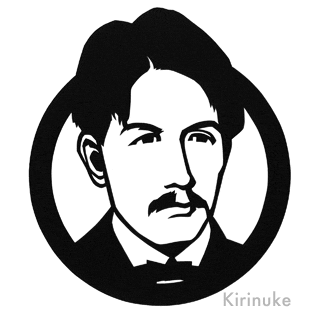
While the importance of “thinking” is understood, the act of “thinking” itself can be subjective and prone to egocentricity. Merely thinking in one’s own way is not enough, and to prevent this, is it not necessary to “learn”? How does that aspect work?

The result appears to have only frustrated Yoko’i. However, this issue was of great importance to Inoue. He thoroughly rejected subjectivism in all matters and maintained a self-disciplined attitude of viewing himself objectively. He never wavered from this approach throughout his life.
The second aspect is the evaluation of Christianity

Inoue strongly opposed Yokoi’s understanding and had a vehement reaction.

Christianity regards the heavenly realm as more important than earthly nations, and it pursues values that prioritize the afterlife, similar to the teachings of the Ikko sect which emphasizes the eternal bond between ruler and subject and the everlasting bond with Buddha.

Inoue believed that they were a dangerous religion that had the potential to cause unforeseen changes in the future.

If contact with “foreigners” begins, the influx of Christianity will be inevitable.

In recent times, Christianity has also learned from the painful experiences of religious wars, and it is unlikely that they would seek to impose it on our country.

Even without coercion, once it begins to infiltrate, its influence cannot be stopped due to the force of “natural momentum,” and the only option is complete isolation to prevent it entirely.
The third issue is related to trade

We have to engage in international trade by opening up to the world.

Japan is an agrarian-based country. With the opening up to foreign goods, it is inevitable that commerce will flourish, and if commerce becomes disproportionately dominant, Japan may end up like Edo or Osaka.

According to some reports, the townspeople of Edo and Osaka were said to despise labor and pursued “kirimatsu-gyō,” engaging in frivolous and extravagant activities. The people became accustomed to luxury, and their sentiments flowed toward leisurely pursuits. On the other hand, Kumamoto, as a country centered around agriculture, has established a well-regulated society with a strong moral foundation and appears to be well-governed.

If the country is opened up, various foreign customs and practices, including Christianity, will inevitably enter. In the face of such chaos, Inoue questioned how to handle it. His ideal was the formation of order based on “mutual concession” with benevolence as the guiding principle.

What Western countries are doing is inhumane domination through colonial rule. Such actions are not in accordance with “Tenri” (the principles of Heaven).

“One world, four seas, brothers and sisters.”、、

“One world, four seas, brothers and sisters” is nothing more than a convenient excuse used by Western countries to pursue their own interests while masking their own self-interests.

Inoue was not unaware of the reality of the changing world and the forces that made it difficult to maintain “sakoku” (national isolation). He acknowledged the need for practical measures such as “reforming the military administration, establishing a naval force, and improving weaponry.”
“Devotion to Japan”
The strength of Inoue’s conviction stems from his thorough study of the “Four Books and Five Classics” since childhood, his deep understanding of Zhu Xi’s teachings, and the values he acquired as a result. It became his belief system and formed a significant part of his identity.
On the other hand, Yoko’i argument can be seen as a difficult-to-accept theory that rejects his own identity, denies the identity of the Kumamoto domain, and even denies the identity of Japan as a nation.
Inoue thoroughly questioned that aspect.

Furthermore, Inoue says.

If all humanity were brothers, why would colonies be established?

“If we keep advocating for seclusion, we may end up like Choshu, which was bombarded by the combined fleet of Great Britain, the United States, and other countries.”

If the concept of “All under Heaven are brothers” is true and if the Western countries truly represent civilization, then why did they subject Choshu to such a fate? If they truly believed in the idea of “All nations are united,” why did they view Choshu, which refused to open its doors, as an “enemy” and bring about its downfall? Is that what they consider to be “the Heavenly Principle”?

If they were truly civilized nations, they should not have done such things!

This resonates with the discussions surrounding today’s globalization as well.
It is natural that isolationism is no longer feasible. However, if we forget to some extent to protect the country, the essence of the nation may be lost, according to Inoue’s argument.
Inoue’s argument for isolationism had inherent limitations as a practical response to the changing times. In fact, Inoue himself acknowledged the forces of the world that made isolationism impractical.
The question was, in the inevitable situation of opening up to the world, what should be protected and how should the country be preserved.
I can’t help but feel a great sense of empathy towards Inoue. However, if his argument had ended at the level of opposition to Yokoi, he would have been remembered as a mere proponent of isolationism and a conservative thinker.
However, that was not the case for him.
source:The Truth of the Imperial Rescript on Education

Regardless of the merits of this anti-globalization argument, I personally believe that Inoue’s unwavering conviction and dedication to the concept of Japan, which he carried since his childhood, should be highly valued.
Indeed, throughout his life, Inoue remained steadfast in his fundamental beliefs without wavering.
Afterwards, Kowashi Inoue studied the judicial system during his study abroad in Europe.
The statement that “Japan’s judicial system and court system were created by Kowashi Inoue” is not an exaggeration. Inoue made significant contributions to the development and modernization of Japan’s legal and judicial systems.
What sets Kowashi Inoue apart from other foreign students is that he did not fall into the trap of Western worship that many others did, nor did he engage in the unilateral denigration of Japan.
Inoue maintained a balanced perspective, recognizing the merits of Western ideas and systems while also valuing the unique aspects of Japanese culture and society.
His goal was not to blindly imitate the West, but rather to adapt and integrate useful elements into the Japanese context, taking into account the country’s specific needs and circumstances.
Inoue’s approach demonstrated a deep sense of pride in his own culture and a commitment to the progress and development of Japan on its own terms.
Despite being extremely diligent and earnest in studying the West, Kowashi Inoue did not exhibit any elements of blindly idolizing the West, as can be seen from his writings.
As a key figure in the Meiji government, Kowashi Inoue played a significant role as a “Grand Designer.”
He was discovered by Toshimichi Okubo and became Okubo’s right-hand man. Even after Okubo’s passing, he continued to serve as a key advisor to Aritomo Yamagata and Hirofumi Ito, playing a role in important legislative work such as the development of criminal law, criminal procedure law, and the fundamental design of the judicial system, including the establishment of the Daishin’in, which corresponds to the present-day Supreme Court.
Indeed, he played a crucial role as a “Grand Designer” of the Meiji government.
What is the “Imperial Rescript on Education”?
The Origin Story
As I mentioned earlier, in the 23rd year of the Meiji era, a scholar named Nakamura Masanao drafted the initial version of the Imperial Rescript on Education.
However, there were concerns regarding its legal compliance, and Kowashi Inoue, who was the Director-General of the Legislative Bureau at the time, strongly opposed the content and rejected the proposal from the Ministry of Education.
The main reason for his opposition was that Nakamura’s draft had a strong influence of Christianity, which raised concerns.
Perplexed by this, Aritomo Yamagata, a prominent figure in the government, asked Inoue to provide a concrete alternative, asking, “Why is it not acceptable? What kind of proposal would be suitable?”
In response, Inoue wrote a letter to Yamagata, pointing out the moral and ideological deterioration in society and expressed his concerns.

This rescript is considered the “last stronghold” to rectify those issues.
The Imperial Rescript on Education is seen as the final trump card in Japanese education. In order to prevent this card from becoming empty, it requires politicians to unite and demonstrate their determination to uphold it by taking the lead.

Do you have that determination?
By the way, it should not be forgotten that the influential statesman Nagazane Motoda, who was also a senior from the same region and known as the “teacher of Emperor Meiji,” had a deep involvement in the Education Imperial Rescript.
Soho Tokutomi, a prominent thinker and a forerunner of modern-day journalists, actively expressed his views from the Meiji to Showa eras. He regarded Nagazane Motoda as the “closest and most trusted advisor” who played a pivotal role in shaping the character of Emperor Meiji. Soho praised Motoda as a remarkable individual without any personal motives, emphasizing his outstanding qualities.
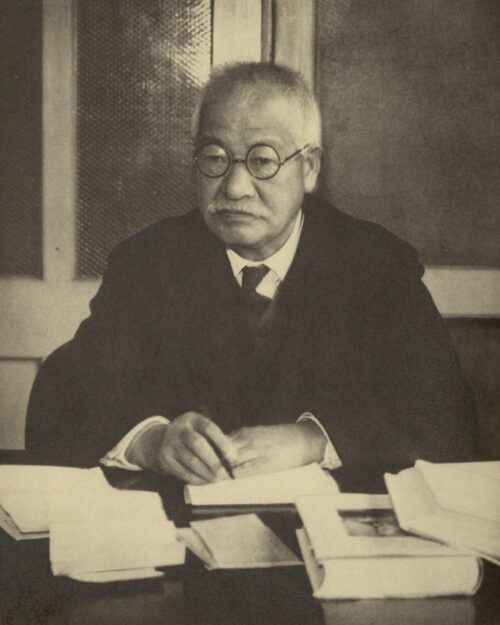
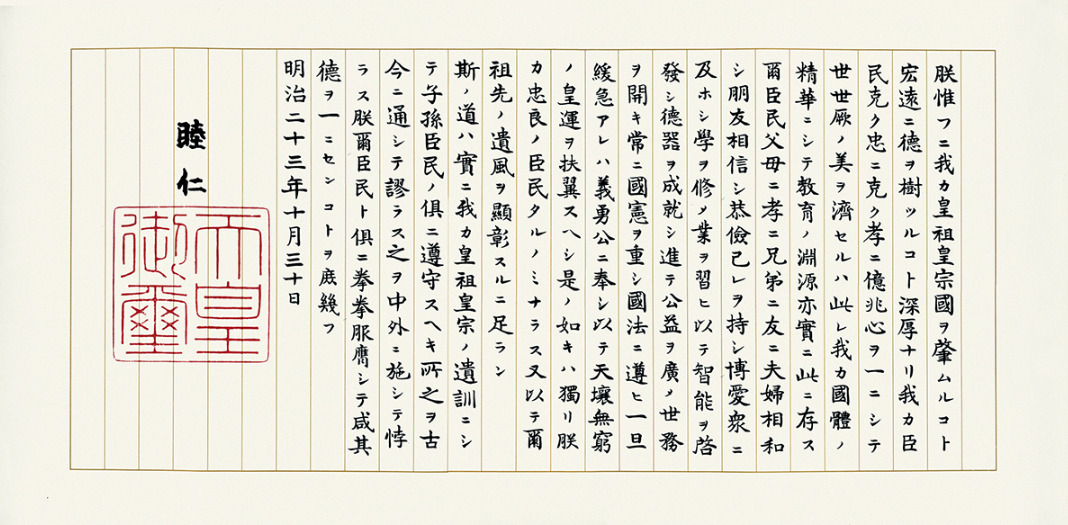
The Role Played by the Imperial Rescript on Education
Politically, Tsuyoshi Inukai, a leading figure of the popular rights movement who stood in stark contrast to Inoue, had the following assessment of him:
“Inoue is not a superficial individual who only speaks without substance. He is a sincere person who never forgets to contemplate the future of the nation from the moment he wakes up until he goes to sleep.”
The ‘Imperial Rescript on Education’ became the spiritual pillar of the Japanese people
The growing influence of the “Imperial Rescript on Education” among the Japanese populace can be observed through real-life incidents that occurred in the Navy after the Russo-Japanese War.

At that time, Japan had begun to enter the development of submarines, which had been a subject of competition among the major powers. However, one day during a submarine training, an accident occurred, causing the submarine to sink with Captain Sakuma and all the crew members on board.
With the survival of everyone seeming hopeless, the Navy managed to raise the sunken submarine and opened the hatch. In such situations, it was commonly believed in other countries that crew members would rush to the hatch in an attempt to escape, resulting in chaos and casualties.
However, in this incident, there was not a single casualty near the open hatch. Furthermore, rather than attempting to escape, every crew member had remained at their post and had passed away as if still on duty.
When this news spread, the entire nation was filled with solemnity, deeply moved by the fact that these imperial servicemen had faithfully carried out their duties until the end, even sacrificing their lives. People were filled with admiration for their remarkable actions and collectively praised their nobility.
However, the impact on the nation did not end there. It was the content of the remarkable last letter left by Captain Sakuma, found in the pocket of his uniform, that further stirred deep emotions among the people.
The letter began with an apology for having accidentally sunk His Majesty’s vessel and caused the death of his subordinates due to his own negligence. It then went on to describe the exceptional dedication and composure displayed by all the crew members until their last moments.
Lastly, it concluded with a humble plea to His Majesty, stating, “I respectfully implore Your Majesty to ensure the well-being of the bereaved families of my subordinates. It is the only concern that weighs heavily on my mind.”
Even in the fading light and depleting air inside the submarine, Captain Sakuma’s final thoughts were with his subordinates, and he expressed his wish for the Emperor to provide assistance to the families left behind.
source:The Truth of the Imperial Rescript on Education
This episode of Captain Sakuma later became part of moral education materials and gained recognition even among foreign military personnel. Captain Sakuma and his crew members were praised as an exemplary model of military personnel worldwide.
Thus, the Imperial Rescript on Education firmly took root in the hearts of the people and became the backbone of the Japanese spirit.
The highly praised Japanese “Imperial Rescript on Education”
The “Imperial Rescript on Education” started gaining significant attention overseas about 15 years after its promulgation, in the year 1905 during the Russo-Japanese War.
At that time, Japan, led by Admiral Togo Heihachiro and the combined fleet, achieved remarkable victories against the Russian Baltic Fleet, which was considered the strongest in the world. Japan also achieved victories against the Russian forces on the Asian continent. The news of “a small island nation in the Far East, Japan, successfully advancing against the major power of Russia” spread throughout the world and amazed people everywhere.
In this context, the Japanese government dispatched Suematsu Kenchō to Europe and Kaneko Kentaro to the United States as members of the House of Peers, with the aim of promoting favorable public opinion toward Japan.
They carried with them an English translation of the Imperial Rescript on Education and explained its content, emphasizing that it embodied the indomitable spirit of the Japanese people. They delivered lectures in various locations, evoking great admiration and stirring emotions.
Furthermore, on September 5, 1905, the peace conference between Japan and Russia took place in Portsmouth, United States. Japan, which had been confident in its position as the world’s strongest, managed to bring Russia to its knees. This achievement sparked explosive global interest in Japan.

Among them, the United Kingdom regarded the Imperial Rescript on Education as the driving force behind Japan’s development and requested the dispatch of lecturers to the Japanese government for moral education based on the rescript. As a result, Kikuchi Dairoku promptly translated the Imperial Rescript on Education into English and toured various locations in the UK, actively promoting Japan’s moral education.
The journal of the National Union of Teachers in Britain stated, “A nation with an education spirit that aligns with the Imperial Rescript on Education will consider any difficulties it faces as events of progress and will never deviate from the path of advancement… This patriotic and courageous nation will continue to evolve in education and, as a result, will follow the course of national development with the spirit eloquently demonstrated in the great rescript.”
Furthermore, the educational monthly magazine ‘Educational Times’ praised the Imperial Rescript on Education, quoting its introductory part and stating, “Here, we can see a splendid example of an appeal that possesses dignity, thoughtfulness, and the power to move people’s hearts.”
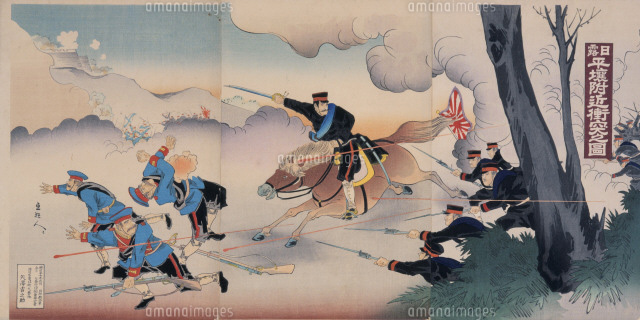
For contemporary Japanese people, the ‘Imperial Rescript on Education’
Thus, the Imperial Rescript on Education, which had garnered praise from various countries, took a complete reversal after the defeat in the Greater East Asia War. This was a natural development because, for the Allied forces that occupied Japan, it was only natural to weaken the country that had fiercely opposed them in the war.
They identified the pillar of the Japanese spirit, known as the “Yamato-damashii,” in the Imperial Rescript on Education. They believed that unless they dismantled the education system based on this Rescript, Japan would remain a potential threat to the United States—a country that could not be considered a safe nation.
In other words, the Imperial Rescript on Education was exploited as a trump card to weaken Japan.
Summary
This is a modern translation of the Imperial Rescript on Education.
私が思うには、わが祖・神武天皇をはじめとする歴代の天皇がこの国を建てられ、お治めになってこられたご偉業は宏大で、遼遠であり、そこでお示しになられたひたすら国民の幸せを願い祈られる徳は実に深く、厚いものでありました。それを受けて、国民は天皇に身をもって真心を尽くし、祖先と親を大切にし、国民すべてが皆、心を一つにしてこの国の比類なき美風をつくり上げてきました。これはわが国柄のすぐれて美しいところであり、教育が基づくべきところも、実にここにあると思います。
国民の皆さん、このような教育の原点を踏まえて、両親には孝養を尽くし、兄弟姉妹は仲良くし、夫婦は心を合わせて仲睦まじくし、友人とは信じ合える関係となり、さらに自己に対しては慎ましやかな態度と謙虚な心構えを維持し、多くの人々に対しては広い愛の心をもとうではありませんか。
また、学校では知識を学び、職場では仕事に関わる技術・技法を習得し、人格的にすぐれた人間となり、さらにそれに留まらず一歩進んで、公共の利益を増進し、社会のためになすべき務めを果たし、いつも国家秩序の根本である憲法と法律を遵守し、その上で国家危急の際には勇気を奮って公のために行動し、いつまでも永遠に継承されて行くべきこの日本国を守り、支えて行こうではありませんか。
このように実践することは、皆さんのような今ここに生きる忠実で善良な国民だけのためになされることではなく、皆さんの祖先が昔から守り伝えてきた日本人の美風をはっきりと世に表すことでもあります。
ここに示してきた事柄は、わが皇室の祖先が守り伝えてきたお訓しでもあり、われわれ皇室も国民もともどもに従い、守るべきものであります。これは今も変わるものでなく、また外国においても充分に通用可能なものであります。私は皆さんと一緒になってこの大切な人生の指針を常に心に抱いて守り、そこで実現された徳が全国民にあまねく行き渡り、それが一つになることを切に願います。
Finally, a quote on Takeru Inoue by Nakae Chōmin, who was known as the “Rousseau of Japan”:
“Among the current politicians in Japan, there is a complete absence of thinkers in power. As a thinking politician, I have only seen Mr. Kowashi Inoue, but he has already passed away.”
